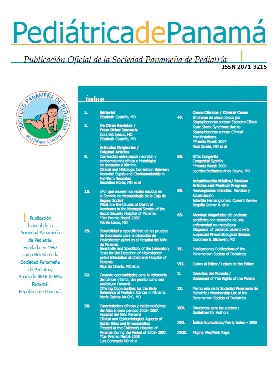Clinical and epidemiological characteristics of hospitalized patients with Bordetella pertussis infection from 2009 to 2021
Authors
DOI:
https://doi.org/10.37980/im.journal.rspp.20232208Keywords:
whooping cough, Bordetella pertussis, pneumoniaAbstract
Introduction: Whooping cough caused by the Bordetella pertussis bacterium is one of the main vaccine-preventable diseases in the world. In Panama it is an important cause of morbidity and mortality in the child population. At the national level, 20 cases were registered in 2018 and 108 in 2019. The objective is to describe the clinical and epidemiological behavior of the infection in the pediatric population.
Materials and methods: It’s a descriptive, retrospective and observational study. Patients from 0 to 14 years old with a diagnosis of B. pertussis infection were included. The variables: age, sex, origin, comorbidities, signs, symptoms, vaccine against B. pertussis, blood count, complications, death.
Results: The hospital rate was 5 cases per 10,000 hospitalized. Sex presented a ratio of 2:1. The most affected age group was 2 to 3 months. Cough was the most frequent manifestation. The most frequently observed comorbidity was malnutrition. 56% of the patients didn´t have a vaccine against B. pertussis. Leukocytosis was observed in 66% of cases, lymphocytosis in 16%, and thrombocytosis in 34%. Hospital mortality rate, by specific disease of 1.4 cases per 10,000 hospitalized. Fatality rate, 25 per 100 cases.
Conclusions: A predisposition was found in the female sex. Younger infants are the most affected group. Most of the patients and their mothers had not received vaccination against B. pertussis. The observed lethality was higher than that described in the literature.
Downloads
Additional Files
Published
Issue
Section
License
Copyright (c) 2023 Infomedic Intl.Derechos autoriales y de reproducibilidad. La Revista Pediátrica de Panamá es un ente académico, sin fines de lucro, que forma parte de la Sociedad Panameña de Pediatría. Sus publicaciones son de tipo gratuito, para uso individual y académico. El autor, al publicar en la Revista otorga sus derechos permanente para que su contenido sea editado por la Sociedad y distribuido Infomedic International bajo la Licencia de uso de distribución. Las polítcas de distribución dependerán del tipo de envío seleccionado por el autor.






